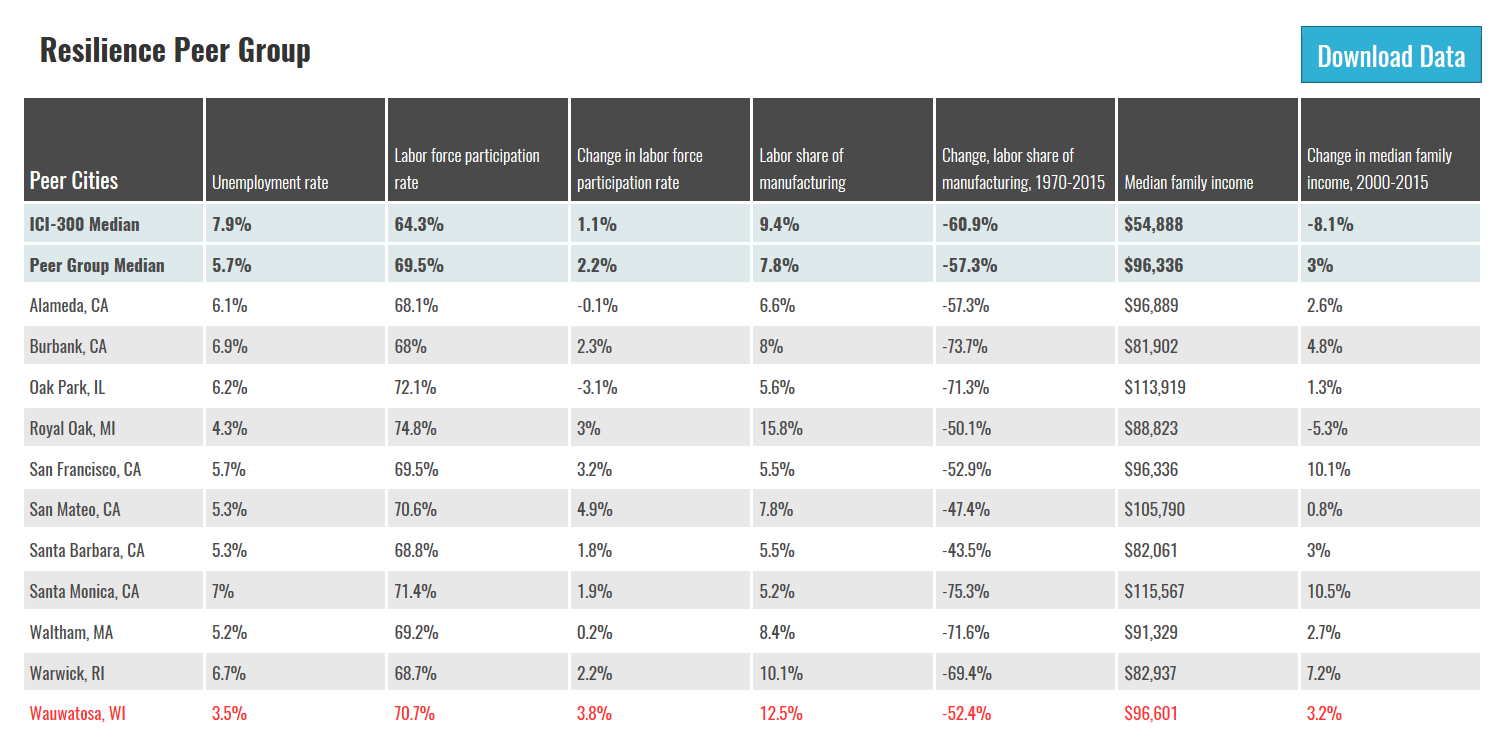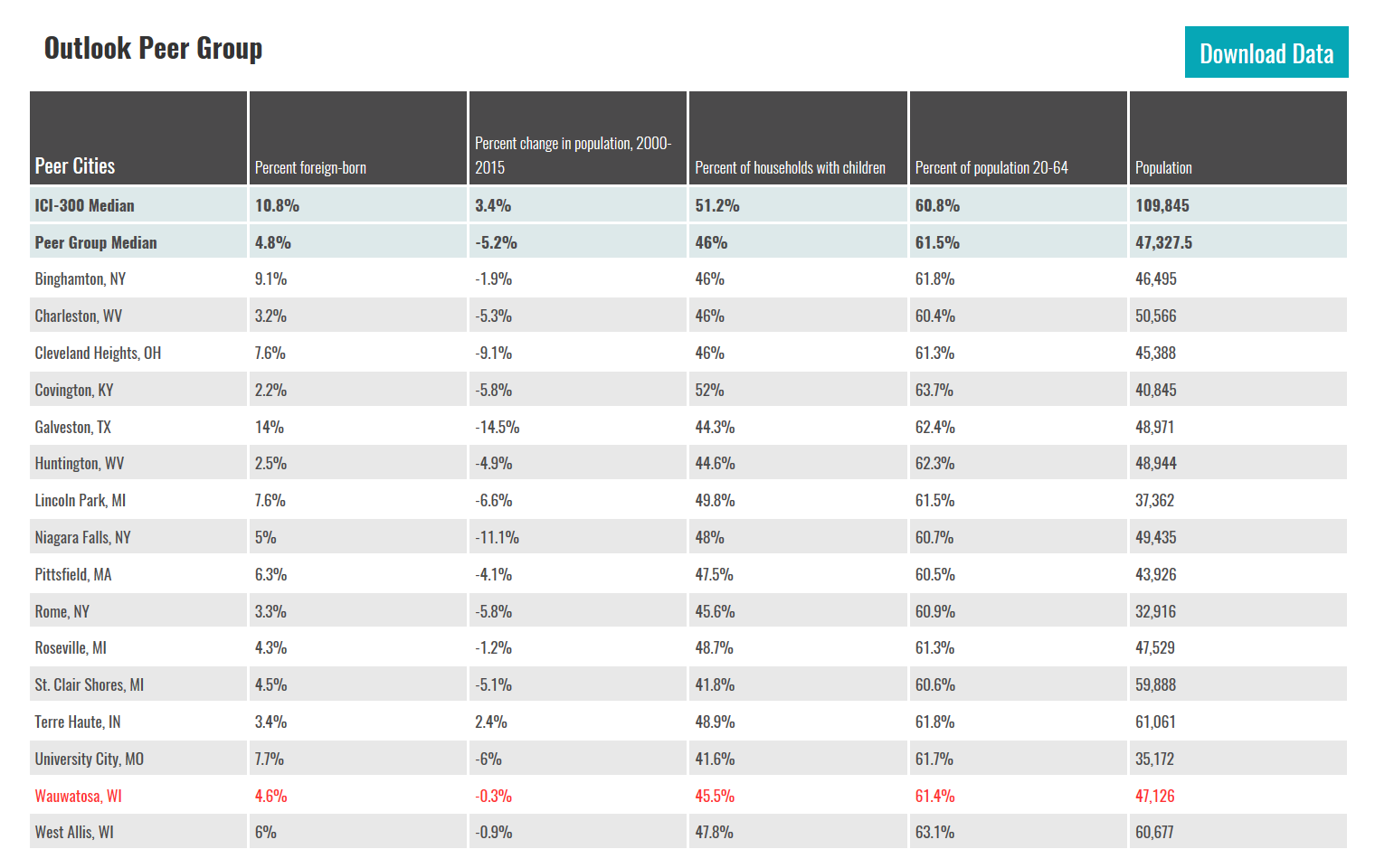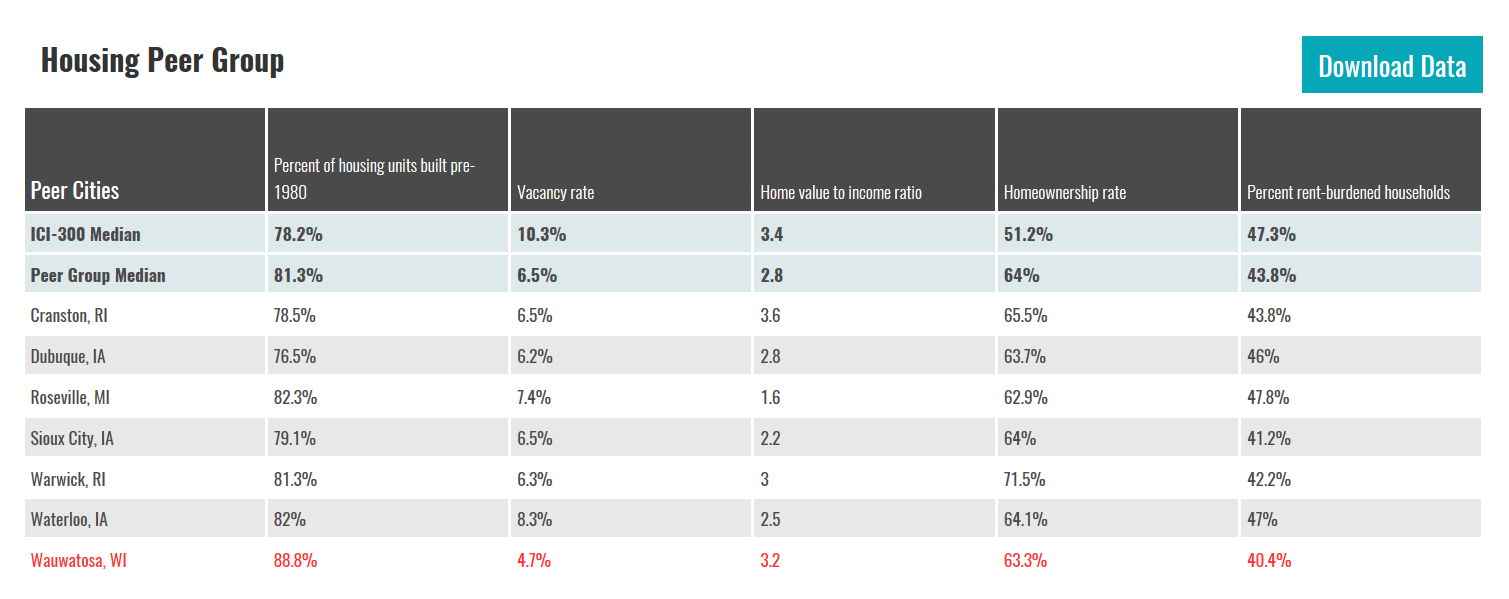Understanding the PCIT or What do Wauwatosa and Waltham have in Common?

What do Wauwatosa, WI and Waltham, MA have in common? A new online data visualization instrument from the Federal Reserve Bank of Chicago’s Community Development and Policy Studies division sheds light on common trends within groups of peer cities, sometimes revealing unexpected connections. This blog demonstrates how the Peer City Identification Tool (PCIT) can help municipalities understand key challenges and opportunities in the context of their peers.
What stands out about Wauwatosa and its peers is a median family income far higher than the median of all cities in the dataset (the “ICI-300 median”) that powers the tool. The resilience theme, reflected in Table 1 below, describes economic changes and labor market conditions, and in this case it indicates that these cities are particularly resilient. Wauwatosa and its peers have all lost manufacturing jobs at a rate similar to the ICI 300 as a whole, but overall have retained a higher level of manufacturing employment than the ICI median, and boast lower unemployment rates and higher labor force participation. This resilience is further indicated by median family incomes that are high and growing, as opposed to declining incomes for the PCIT dataset as a whole.
1. Resilience

2. Equity

Exploring Wauwatosa’s peers through the other data themes sheds additional light on the city’s path to resilience. For example, Wauwatosa’s peers in the Equity theme (2), which considers a city’s racial and socioeconomic conditions, again paint a picture that diverges from the ICI dataset as a whole. In particular, Wauwatosa’s population is highly educated, with over half of the population possessing a bachelor’s degree – the highest percentage amongst its peers. At the same time, Wauwatosa has maintained a very low poverty rate and a low wage-based Gini coefficient, reflecting low levels of inequality – something that is unusual given the high median family incomes. Notably, however, Wauwatosa is overwhelmingly white, a characteristic that drives its low dissimilarity indices, a measure of racial segregation (within communities).
3. Outlook

The Outlook theme, which explores signs of a city’s demographic and economic future, adds nuance to Wauwatosa’s current conditions (3). First of all, Wauwatosa is relatively small. Some might argue that its small and spopulation size insulates it from the challenges experienced by places that are experiencing population fluctuations. Others might point out that its small size limits its resources and capacity – a challenge experienced by small cities that are not so economically resilient. Wauwatosa does appear to have a relatively small percentage of “dependent” population as indicated by a lower than average percentage of families with children and a higher than average percentage of working age residents. A potential challenge to its future growth is that Wauwatosa is not attracting foreign born residents.
4. Housing

Wauwatosa again demonstrates relative stability among peers in the PCIT’s housing screen, which measures housing affordability, tenure, and age of the housing stock (Table 4). A high homeownership rate, low vacancy rate and relatively low percentage of rent burdened households reflects healthy housing conditions, a not unexpected finding given a population with high incomes and low poverty rate. Of note, however, is Wauwatosa’s aging housing stock. Again, should the city decide it needs to attract new residents, an older housing stock may deter young families.
Concluding thoughts
This high-level analysis of Wauwatosa indicates a small city that is prospering. However, given that the city at some point experienced a dramatic shift in its economic landscape, as indicated by a high level of manufacturing job losses, it begs the question of how city leaders found their footing. What does the economic landscape look like today? What kinds of jobs are held by Wauwatosa residents that appear to contribute to a broad based prosperity? Is it purely its location as a wealthy suburb of Milwaukee that establishes this position of strength? Conversely, to what extent could challenges faced by Milwaukee impact the economic prospects of Wauwatosa? How is Wauwatosa avoiding the trend of increasing suburban poverty? What could be learned from / shared with other suburbs of mid-sized urban areas facing real demographic and economic challenges?








